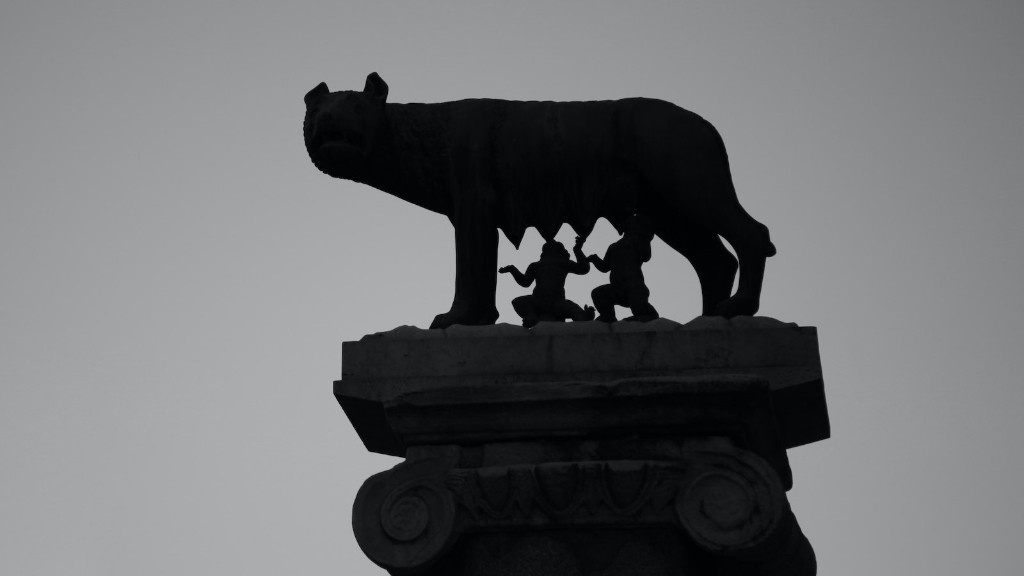A person’s name in ancient Rome consisted of a given name followed by a series of surnames. The first of these was the nomen, a name that identified a person’s family, which was passed down from father to son. The second surname was the cognomen, which identified an individual within the family. For example, the Roman dictator Julius Caesar’s full name was Caius Julius Caesar. Caius was his given name, Julius was his nomen, and Caesar was his cognomen.
In ancient Rome, surnames were usually passed down from father to son. If a man had more than one son, each son would usually add a different surname to his name. For example, if a man named Marcus had two sons named Lucius and Gaius, his sons might be called Lucius Marcus and Gaius Marcus.
How did last names work in ancient Rome?
This was a common practice in ancient Rome, and helped to ensure that family names were passed down from one generation to the next. By naming sons after their father or other male ancestors, families could keep the same praenomina (given names) for many generations. This was a way of honoring one’s ancestors, and keeping their memory alive.
As time passed, Roman citizens began to add additional features to their names in order to show wider family relationships and origins. For example, a person might add their father’s name, their clan name, or the name of the place they were born.
Did Roman wives take their husband’s last name
It was not uncommon for a woman to keep her own family name after she married. She might be identified in relation to her husband, but her birth name would be preserved. For example, the name Clodia Metelli would indicate that she is the wife of Metellus. Children usually took the father’s name.
Roman women during the Republic had very limited variation in their names. Every daughter in the same household was limited to the feminine form of her father’s nomen gentilicium, which might be enhanced with “Prima”, “Secunda”, Tertia” (“First”, “Second”, “Third”), etc. This limited naming system was likely due to the patriarchy of Roman society during this time period.
What did Romans name twins?
The story of Romulus and Remus, the legendary founders of Rome, is a fascinating one. Traditionally, they were the sons of Rhea Silvia, daughter of Numitor, king of Alba Longa. According to the legend, they were suckled and cared for by a she-wolf after being abandoned in the wilderness. Romulus went on to found Rome, while Remus was killed by his brother during a fight. The story highlights the importance of family, loyalty, and determination.
Gaius Julius Caesar was one of the most prominent figures in Roman history. He was a general and dictator who played a key role in the Roman Republic. His name was borne by a number of other notable figures, including the Gaius Julius Caesar who was a prominent name in Ancient Greek times.
What is the oldest known surname?
People in early society seemed to use matrilineal surnames, but this changed over time to favor patrilineal surnames. The oldest recorded European surname is “O Cleirigh” from County Galway, Ireland in 916. This change in surname tradition likely reflects a change in social structure and family dynamics over time.
The most common surnames in Italy according to Italianames.com are Rossi, Russo, Ferrari, Esposito, Bianchi, Romano, Colombo, and Ricci. These surnames are most likely to be found in families with Italian heritage.
What were the declining Roman names
These are some of the most common surnames found in Rome during the 2nd century AD. While some of these names may have fallen out of use by this time, others were still quite common.
Sibling marriages were certainly not unheard of in ancient Egypt, as attested to by both papyri and Roman census documents. While the reasons for these marriages are not entirely clear, it is possible that they were seen as a way to keep property or status within the family. In any case, these marriages were not without their challenges, as siblings would have had to navigate both their familial and marital relationships.
How many wives could a Roman have?
Ancient Rome was a monogamous society, which means that marriage was between two people and was not allowed to have more than one spouse at a time. This was in contrast to other ancient civilizations, where men of elite status typically had multiple wives. The practice of monogamy helped to distinguish the Greeks and Romans from these other cultures.
There is no doubt that marriage between cousins was legal in Roman society of the late Republic and early empire. However, there may have been some social stigma attached to it, as it was not as common as marriage between non-cousins.
Did Romans marry children
The Roman legal sources indicate that women could not marry before age 12. This was probably because they were not considered to be of legal age to consent to marriage.
It is interesting to note that the terms usually used to denote parenting were parens ‘parent’, pater ‘father’, and mater ‘mother’. This shows that even in ancient times, the family was considered to be the basic unit of society, and that parents were responsible for the care and upbringing of their children.
What is the oldest Roman family?
The patrician class was the highest social class in ancient Rome. Patricians were wealthy landowners who could trace their ancestry back to the original senators appointed by Romulus, the founder of Rome. They had immense power and influence, and their position was unassailable. Over time, however, the patrician class began to lose its grip on power. Social and economic changes led to the rise of a new class of wealthy citizens called the “plebeians.” The plebeians eventually won the right to vote and hold office, and by the end of the Roman Republic, they had strips the patricians of their power.
The oldest known evidence of twins are the remains of two boys recovered during the excavation of an Upper Paleolithic site in Krems-Wachtberg, Austria, in 2005 and dated to c 31,000 years ago. These remains are the oldest known convince of twins and suggest that twins have been around for at least 31,000 years.
What did Romans call their children
The praenomen was the first part of a Roman name. It was a personal name and was the closest thing that the Romans had to the first names we have today. A child would be officially given their praenomen at a purification ceremony known as a Lustratio.
In ancient Rome, it was believed that a child’s spirit was particularly vulnerable during the first few days after birth. To protect the child, he or she would not be given a name until 8 or 9 days after birth. The number of days depended on the child’s gender; boys would be named on the 8th day, while girls would be named on the 9th. Once the days had passed, the child would be gifted a name and a bulla (a amulet worn around the neck) during a ceremony. This tradition was meant to safeguard the child’s spirit and ensure a long and healthy life.
Warp Up
There is no easy answer for how surnames worked in ancient Rome as the naming conventions varied over time and place. Generally, surnames were inherited from the father and could be passed down to the children though this was not always the case. As Rome became more populous and hierarchical, the use of surnames became more widespread as a way to distinguish individuals from one another. By the imperial period, most Romans had a surname though some notable exceptions existed, such as the emperor Augustus who famously did not adopt a surname until later in his life.
Surnames in ancient Rome were generally passed down from the father to the children. However, there were exceptions to this rule. If a woman’s father had died before she was married, she would often take her husband’s surname. Or, if a woman’s father was of a lower social class than her husband, she might take her husband’s surname to improve her social standing.





